Results 7,221 to 7,230 of 12094
Thread: Anandtech News
-
08-09-17, 09:40 AM #7221
Anandtech: EKWB Releases New Varder EVO Fan with Start-Stop Function
EKWB recently released a new lineup based on its EK-Vardar fans. The Vardar line was established in 2014 and created to be an industrial grade high-static pressure computer cooling fan. EK says the line was designed and built primarily for highest-performance computer liquid cooling systems, a fitting choice as the fan name "Vardar" is a term used for a cold northwesterly wind blowing into the valleys of Macedonia in the Balkans. The Vardar line has now grown into the new EK-Varder EVO series of fans offering users the ER EVO which an extended range of PWM operation featuring a special start-stop function. The EVO "S" line for quiet operation, and the Furious Vardar EVO for moving the most air.

EK says the electronics on the ER EVO fan has been tweaked so the fan stops spinning if the PWM signal falls below a preset duty cycle value. In other words, when the PWM duty cycle is set below 25-30%, the fan will stop spinning. Once the PWM duty cycle is increased, the fan will then spin up. Being able to stop and start the fan can bring benefits of a totally silent PC, prolong the life of the fan, and can slow the buildup of dust on the heatsink or radiator by only running when it needs to.

The new electrical design uses actively cooled motor windings and Hydro-Dynamic bearings with a 50000 hour MTBF. The frame shape is said to provide optimal performance with either pull or push configurations. The shape of the frame allows the power cables to be routed through it when putting fans together on a radiator.
The Vardar EVO line comes in both 120mm and 140mm size. They all aim to be a high-static pressure, low noise profile fan with each using a 7 fan blade design. Vardar EVO fans come in single (all black or all white) and two-tone (black with gray blades). The original Vardar's maximum fan speed was designated by letter/number combination like the Fujita scale F3, F4, etc. The higher the number, the faster the fan would run. The EVO series changes that up usingnd has different names altogether. The basic EVO 120S/140S model spins up to 1150 RPM, the 120ER and 140ER models (ER designates the start/stop ability) reach 2200 RPM, while the EK-Furious Vardar reaches 2500 RPM for the 140mm, and 3000 RPM for 120mm.


EK-Vardar EVO ER fans are already available at the EK Webshop and online through EKWB's Partner Reseller Network. The EK-Furious Vardar EVO and white EK-Vardar EVO fans will be available in the next few weeks.
Related Items:EK-Vardar EVO Vardar EVO 120S Vardar EVO 140SVardar EVO 120ER Vardar EVO 140ERFurious Vardar EVO 120 Furious Vardar EVO 1200dB Technology N N Y Y N N Max. Speed 1150 RPM 2200 RPM 3000 RPM 2500 RPM PWM Duty Cycle 60-100% 25-100%
(Extended Range)40-100% Power Draw.55W 2.16W 5.64W 9.07W Max. Airflow (CFM)40 64 77 108 107 144 Static Pressure (H20)0.92mm 1.08mm 3.16mm 3.15mm 5.71mm 5.28mm Noise Level (dBA) 23.7 26 33.5 40.7 42 48.4 Shaft Bearing Hydro-Dynamic MTBF 50000 Hours @ 40C Price (inc. VAT) 14.95€ 18.95€ 16.95€ 20.95€ 16.95€ 20.95€
More...
-
08-09-17, 12:22 PM #7222
Anandtech: Acer and ASUS Delay Their 4K 144 Hz G-Sync HDR Displays to 2018
In a bit of a surprising move, Acer last week announced that its 4K HDR Predator X27 gaming display would be delayed to Q1 2018, missing the important holiday sales season. The monitor, based around an NVIDIA reference design for a G-Sync HDR display that was in turn revealed back at CES 2017, has been eagerly anticipated, and until now was expected by the end of this year. Meanwhile, ASUS's ROG Swift PG27UQ, which features virtually the same specifications, has also been delayed to 2018.
The Acer Predator X27 and the ASUS ROG Swift PG27UQ are based on AU Optronics’ M270QAN02.2 AHVA panel, which offers a 3840×2160 resolution and can reach a 144 Hz refresh rate. Combined with a direct LED backlighting system with 384 zones, and monitors based on the M270QAN02.2 panel have been shaping up to be the gaming monitors to get, as they would offer a second-to-none feature set list.
So far, only Acer and ASUS have announced displays based on this panel, with both being fairly straightforward implementations of NVIDIA’s reference design. Neither Acer nor ASUS have disclosed the reason for the delay, but two specific possibilities come to mind: either the reference design needs to be further polished, or mass production of the panel was delayed by AUO. The latter was expected to start volume production of the M270QAN02.2 AHVA panel in July, but it's rare that we ever see public confirmation of panel mass production.
Unfortunately for NVIDIA, this ultimately serves as a de-facto delay for their G-Sync HDR platform, as these displays are the flagship of the line. No other G-Sync HDR displays have been announced, and there are precious few panels set to be released this year that would even meet NVIDIA's needs. Otherwise, in the opposing AMD camp, while none of AMD's partners have announced similar FreeSync displays, any potential products using the AUO panel should be similarly impacted. So FreeSync users looking for a flagship-quality FreeSync 2 HDR display will find themselves waiting into 2018 as well.
Related Reading:
- ASUS Demonstrates ROG Swift PG27UQ: 4K, 144 Hz, HDR, DCI-P3 and G-Sync
- Acer Announces Predator X27 Monitor: 4K@144 Hz with DCI-P3, HDR10, & G-Sync
- Samsung Announces First Freesync 2 Monitors: CHG70 & CHG90 - Quantum Dots, Up to 49”, 144 Hz, DCI-P3
Sources: Acer, PCGamer.
More...
-
08-09-17, 12:22 PM #7223
Anandtech: Samsung At Flash Memory Summit: 96-Layer V-NAND, MLC Z-NAND, New Interface
At Flash Memory Summit this week, Samsung is sharing details of their storage technology roadmaps and showing off several prototypes.
Last year, Samsung announced their fourth generation of 3D NAND, a 64-layer design. This fourth generation V-NAND is now in mass production and will be rolling out to many product segments over the coming months. Most products will be using either 256Gb or 512Gb TLC dies. Compared to the 48-layer third generation V-NAND, the 64-layer V-NAND offers the same read performance but approximately 11% higher write performance. Power consumption has been improved more significantly, with the current required for a read operation dropping by 12% and for a program operation the current required has decreased by 25%. Samsung claims their 64-layer V-NAND in a TLC configuration can last for 7,000 to 20,000 program/erase cycles.
Samsung has now also announced their fifth-generation V-NAND, which will increase the layer count further to 96 layers with relatively few other changes to the design. The fifth generation will include Samsung's first QLC NAND flash (four bits per cell), with a capacity of 1Tb (128GB) per die.
Beyond the fifth generation, Samsung says they may start using techniques like string stacking, putting the peripheral logic under the memory array, or shrinking the horizontal dimensions of their flash. String stacking is more or less inevitable if the layer count is to continue increasing, but it is not clear exactly when that transition will be worthwhile. At the moment, Samsung estimates string stacking would increase production costs by about 15% due to the extra process steps involved, and aligning a second stack of 3D NAND layers will present serious yield challenges. Putting the peripheral logic under the memory array has worked well for the 3D NAND from Intel and Micron, and Samsung estimates it could reduce their own die sizes by 20-30%. Shrinking the horizontal dimensions of their NAND flash memory cells also offers a way to increase density and improve price per GB, but that path leads to the same endurance and reliability problems that eventually made planar NAND a dead end technology.
Samsung provided an update on Z-NAND memory, their near-term solution for offering lower latency than existing flash memory. In the long run, non-flash persistent memory technologies will be required, but by modifying their existing 3D V-NAND architecture they have an SLC-based memory that offers 3µs read latencies, 15 times faster than their V-NAND flash memory (whether that's comparing against MLC or TLC V-NAND was not specified). Their first Z-NAND product, the Z-SSD SZ985, offers overall random read latencies of less than 15µs, which is 5.5 times faster than their TLC-based enterprise SSDs. Samsung also announced a second generation Z-NAND, this time based on MLC NAND instead of SLC. This sacrifices a bit of performance (5µs read latency compared to 3µs) but offers much better storage density. Looking beyond Z-NAND for new memory technologies, Samsung is working on both phase-change memory and spin-torque magnetoresistive RAM (ST-MRAM).
Samsung's SSD announcements based on the above V-NAND technologies include a 128TB 2.5" SAS SSD based on QLC V-NAND. For this drive, Samsung will be stacking 32 dies per package, for a total of 4TB in each BGA device.
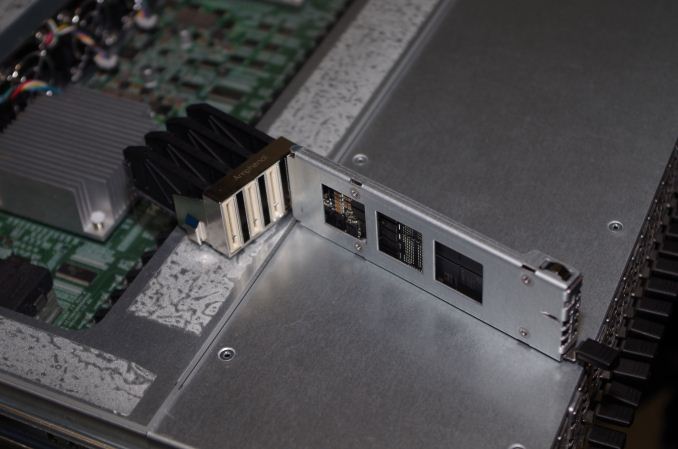 Samsung is also previewing a proposed new enterprise SSD form factor they are referring to as "NGSFF" for now. This form factor uses a 30.5mm by 110mm PCB, substantially wider than the most commonly implemented M.2 form factors and wide enough to accommodate two rows of flash packages. The PCB is mounted on a metal carrier that allows the drive to be used in a new hot-swappable backplane. Samsung is demonstrating a reference 1U server design codenamed "Mission Peak" that achieves a total capacity of 576TB through the use of 36 PM983 SSDs in the NGSFF form factor, each with a 16TB capacity. The motivation and benefits of this style of form factor are the same as for Intel's newly announced "Ruler" form factor: M.2 offers great density but isn't hot-swappable, and high-capacity 2.5" SSDs are hard to cool effectively when they stack two PCBs inside a closed 15mm case. Samsung has not mentioned whether they intend to participate in making NGSFF into an industry standard.
Samsung is also previewing a proposed new enterprise SSD form factor they are referring to as "NGSFF" for now. This form factor uses a 30.5mm by 110mm PCB, substantially wider than the most commonly implemented M.2 form factors and wide enough to accommodate two rows of flash packages. The PCB is mounted on a metal carrier that allows the drive to be used in a new hot-swappable backplane. Samsung is demonstrating a reference 1U server design codenamed "Mission Peak" that achieves a total capacity of 576TB through the use of 36 PM983 SSDs in the NGSFF form factor, each with a 16TB capacity. The motivation and benefits of this style of form factor are the same as for Intel's newly announced "Ruler" form factor: M.2 offers great density but isn't hot-swappable, and high-capacity 2.5" SSDs are hard to cool effectively when they stack two PCBs inside a closed 15mm case. Samsung has not mentioned whether they intend to participate in making NGSFF into an industry standard.
Moving slightly higher in the storage technology stack, Samsung is developing a new specialized software interface for enterprise SSDs. Rather than use block-based addressing, Samsung's PM983K presents a key/value storage interface similar to what is used by many NoSQL databases. Samsung claims this allows for significant performance scaling improvements compared to running RocksDB on a standard PM983, and that it leads to a huge reduction in write amplification. Samsung hasn't discussed the low-level details of the key-value interface, but it may be implemented using the NVMe 1.3 Directives feature, which would give Samsung an easy path to standardization.
Separately from the key/value interface, Samsung's enterprise SSDs are now adopting the NVMe 1.3 Controller Memory Buffer feature and implementing the IO Determinism feature that has been approved for the next NVMe standard. That feature allows for separating the SSD into sets of namespaces that reside on physically separate NAND chips and channels, so that operations on one set will not be able to block operations on another set.
Gallery: Samsung FMS2017





More...
-
08-09-17, 02:45 PM #7224
Anandtech: Intel Introduces "Ruler" Server SSD Form-Factor: SFF-TA-1002 Connector, PC
Intel on Tuesday introduced its new form-factor for server-class SSDs. The new "ruler" design is based on the in-development Enterprise & Datacenter Storage Form Factor (EDSFF), and is intended to enable server makers to install up to 1 PB of storage into 1U machines while supporting all enterprise-grade features. The first SSDs in the ruler form-factor will be available “in the near future” and the form-factor itself is here for a long run: it is expandable in terms of interface performance, power, density and even dimensions.
For many years SSDs relied on form-factors originally designed for HDDs to ensure compatibility between different types of storage devices in PCs and servers. Meanwhile, the 2.5” and the 3.5” form-factors are not always optimal for SSDs in terms of storage density, cooling, and other aspects. To better address client computers and some types of servers, Intel developed the M.2 form-factor for modular SSDs several years ago. While such drives have a lot of advantages when it comes to storage density, they were not designed to support such functionality as hot-plugging, whereas their cooling is a yet another concern. By contrast, the ruler form-factor was developed specifically for server drives and is tailored for requirements of datacenters. As Intel puts it, the ruler form-factor “delivers the most storage capacity for a server, with the lowest required cooling and power needs”.
From technical point of view, each ruler SSD is a long hot-swappable module that can accommodate tens of NAND flash or 3D XPoint chips, and thus offer capacities and performance levels that easily exceed those of M.2 modules. The initial ruler SSDs will use the SFF-TA-1002 "Gen-Z" connector, supporting PCIe 3.1 x4 and x8 interfaces with a maximum theoretical bandwidth of around 3.94 GB/s and 7.88 GB/s in both directions. Eventually, the modules could gain an x16 interface featuring 8 GT/s, 16 GT/s (PCIe Gen 4) or even 25 - 32 GT/s (PCIe Gen 5) data transfer rate (should the industry need SSDs with ~50 - 63 GB/s throughput). In fact, connectors are ready for PCIe Gen 5 speeds even now, but there are no hosts to support the interface.
One of the key things about the ruler form-factor is that it was designed specifically for server-grade SSDs and therefore offers a lot more than standards for client systems. For example, when compared to the consumer-grade M.2, a PCIe 3.1 x4-based EDSFF ruler SSD has extra SMBus pins for NVMe management, additional pins to charge power loss protection capacitors separately from the drive itself (thus enabling passive backplanes and lowering their costs). The standard is set to use +12 V lane to power the ruler SSDs and Intel expects the most powerful drives to consume 50 W or more.
Servers and backplanes compatible with the rulers will be incompatible with DFF SSDs and HDDs, as well as with other proprietary form-factors (so, think of flash-only machines). EDSFF itself has yet to be formalized as a standard, however the working group for the standard already counts Dell, Lenovo, HPE, and Samsung as among its promotors, and Western Digital as one of several contributors.
It is also noteworthy that Intel has been shipping ruler SSDs based on planar MLC NAND to select partners (think of the usual suspects - large makers of servers as well as owners of huge datacenters) for about eight months now. While the drives did not really use all the advantages of the proposed standard – and I'd be surprised if they were even compliant with the final standard – they helped the EDSFF working group members prepare for the future. Moreover, some of Intel's partners have even added their features to the upcoming EDSFF standard, and still other partners are looking at using the form factor for GPU and FPGA accelerator devices. So it's clear that there's already a lot of industry interest and now growing support for the ruler/EDSFF concept.
Finally, one of the first drives to be offered in the ruler form-factor will be Intel’s DC P4500-series SSDs, which feature Intel’s enterprise-grade 3D NAND memory and a proprietary controller. Intel does not disclose maximum capacities offered by the DC P4500 rulers, but expect them to be significant. Over time Intel also plans to introduce 3D XPoint-based Optane SSDs in the ruler form-factor.
Related Reading:
- Intel Announces New DC P4500 And P4600 Datacenter SSDs
- Intel Announces SSD DC P4501 Low-Power NVMe SSD With 3D NAND
- The Intel Optane SSD DC P4800X (375GB) Review: Testing 3D XPoint Performance
More...
-
08-10-17, 08:50 AM #7225
Anandtech: The AMD Ryzen Threadripper 1950X and 1920X Review: CPUs on Steroids
In the early 2000s, we had the battle to high frequencies. The company that could force the most cycles through a processor could get a base performance advantage over the other, and it led to some rather hot chips, with the certain architectures being dropped for something that scaled better. Move on 10-15 years and we are now at the heart of the Core Wars: how many CPU cores with high IPC can you fit into a consumer processor? Up to today, the answer was 10, but now AMD is pushing the barrier to 16 with its new Threadripper processors. We got both of the launch CPUs for review and put them on the grill.
More...
-
08-10-17, 11:27 AM #7226
Anandtech: Enermax Launches LiqTech TR4 AIO LCS for AMD's Threadripper: 100% IHS Cove
Enermax on Thursday introduced its new family of closed-loop liquid coolers designed specifically for AMD’s new Ryzen Threadripper CPUs. The new custom-made LiqTech TR4 AIO LCS feature waterblocks cover 100% of the CPU IHS (integrated heat spreader), a notable improvement over preexisting designs, which designed for smaller chips only partly cover TR4 chips.

High-end air and liquid coolers these days can dissipate huge amounts of heat that exceed TDP of even the most powerful CPUs, such as AMD’s Threadripper or Intel’s Core i7/i9. Manufacturers of coolers are eager to equip their devices with mounting brackets to make them compatible with the new 4094-pin TR4 and 2066-pin R4 sockets as well as the new microprocessors. However, since the coolers were not designed for the large TR4 IHS from the ground up, they cannot cover 100% of its surface. And even though many of them can enable reliable operation at stock frequencies and TDP, they may not be efficient enough during overclocking. Enermax equipped its LiqTech TR4 coolers with special waterblocks that cover 100% of the TR4 IHS to maximize thermal performance and overclocking potential of the new CPUs.
Waterblocks of the Enermax LiqTech TR4 240 and LiqTech TR4 360 AIO liquid coolers come with cold plates featuring the company’s micro-channel-based design with a shunt channel (the firm calls it SCT) that maximizes cooling performance. Both coolers use the same 3000 RPM pump with flow rate of 450 L/h and, as their names imply, are equipped with a 240 or a 360 mm radiator. Enermax claims that the LiqTech TR4 240 and 360 closed-loop LCS can dissipate over 500 W of heat, thus providing a lot of headroom for overclocking.
The oversized waterblocks of the LiqTech TR4 240 and 360 AIO LCS do not allow installation of the coolers on other sockets, which is a price of a custom-made design. As for reliability, just like other products of the kind they are rated for 100 thousand hours MTBF (pump) and come with a two-year warranty.Specifications of Enermax LiqTech TR4-Series Cooling Systems LiqTech TR4 240
ELC-LTTR240-TBPLiqTech TR4 360
ELC-LTTR360-TBPDimensions Waterblock
PumpLength 76 mm Width 82.1 mm Height 38.7 mm Radiator Length 274 mm 394 mm Width 120 mm Depth 39 mm 28 mm Fan Length 120 mm × 2 120 mm × 3 Width 120 mm × 2 120 mm × 3 Depth 26 mm Fan (single) Speed (RPM) 500-2300 Airflow (CFM) 23.81 ~ 102.17 CFM Static Pressure (mm-H2O) 0.673 ~ 6.28 mm-H2O Noise (dBA) 14 ~ 28 Power 3.6 W MTBF (hrs) ?160,000 @ unknown oC Connector 4-pin PWM connector Pump Speed (RPM) 3000 Life Expectancy ?100,000 @ unknown oC Power 4.8 W Tubing Length 310 ~ 315 mm Compatibility AMD TR4/SP3 Intel - TDP ?500 W

The Enermax LiqTech TR4 240 and 360 closed-loop LCS will be available in the U.S. in late August for $129.99 and $149.99, respectively. Pricing and availability in other countries may vary.
Gallery: Enermax LiqTech TR4-Series Cooling Systems





Related Reading:
- The Fractal Design Celsius S24 & S36 AIO Coolers Review
- Deepcool Launches Captain EX RGB CPU Coolers with LED Lighting
- Raijintek Shows Off Pumpless Liquid Cooling System
- Closed Loop AIO Liquid Coolers: 14-way Mega Roundup Review
More...
-
08-10-17, 12:59 PM #7227
Anandtech: Intel EOLs Atom Chip Used for Microsoft HoloLens
Intel is retiring its Atom x5-Z8100P SoC that is used inside Microsoft’s HoloLens augmented reality headset. With the last units shipped in late October, it looks like the software giant is on track with its next-generation HoloLens that is due to arrive in the coming quarters.
Intel asks its customers to place their final orders on the Atom x5-Z8100P SoC (belonging to the Cherry Trail family) by September 30 and says that the final shipments will be made on October 30. Given the fact that Intel seems to have only one customer using the microprocessor, the short amount of time between the announcement of the product discontinuance and the actual EOL was probably negotiated before. Moreover, since we are talking about a semi-custom chip, Microsoft was probably the initiator of the EOL, which indicates that the company is on track with its next-gen HoloLens.
The current-generation Microsoft HoloLens wearable augmented reality PC was released in 2016 and is based on Intel’s Atom x5-Z8100P SoC as well as a custom-designed Microsoft holographic processing unit (HPU) that processes data from various sensors. The HoloLens is equipped with over a dozen of sensors, including a 2 MP video camera, an inertial measurement unit (which means, a set of accelerometers, gyroscopes and maybe even a magnetometer), one depth camera, four environment understanding cameras, four microphones, an ambient light sensor as well as mixed reality capture IC.
The next-generation Microsoft HoloLens will be different compared to the existing augmented reality platform, Microsoft revealed recently. While the device will run Windows 10 and will be equipped with an HPU, it will also feature an AI co-processor integrated into the latter that will use neural networks to enable object and voice recognition skills without the need for an Internet connection. The HPU 2.0 with the programmable AI co-processor will be a self-sufficient device that will run on battery power of the next HoloLens (hence, its power consumption will not be too high). The HPU 2.0 and the AI co-processor were designed entirely in-house and therefore are tailored for usage model of the HoloLens. Given the differences in architecture of the HoloLens Next compared to the existing model, it remains to be seen what kind of CPU Microsoft decides to use for it.
Microsoft demonstrated “an early spin of the second version of the HPU” running live code implementing hand segmentation at CVPR in late July. Therefore, while the chip is functional, it does not seem that the HoloLens Next is just around the corner and it is logical to expect it sometimes in 2018 or even in 2019.
Related Reading:
- Hololens Round Two: Augmented Reality At Build 2016
- Microsoft Reveals Additional Details About HoloLens and Begins to Take Pre-Orders
- Microsoft Hololens Hands-On
More...
-
08-10-17, 02:39 PM #7228
Anandtech: Enermax Shrinks Depth of Platimax D.F. 80 Plus Platinum 1200 W PSU to 6.3”
Enermax this week introduced its new family of 80 Plus Platinum PSUs for ATX desktop computers. The new PSUs are said to be able to clean themselves from dust, and more notable are only 160 mm (6.3”) deep. The flagship Platimax D.F. PSU is currently the world’s smallest 80 Plus Platinum PSU rated for 1200 W output and capable of supporting AMD Threadripper, Intel HEDT, and 2P systems.
High-wattage PSUs are usually rather large because high-capacity capacitors and other components required for such power supplies are bigger than components used for lower-wattage PSUs. Besides, components of such power supplies require adequate cooling when used under high loads, so makers of PSUs increase length of their products to 180 – 225 mm in order to accommodate quality parts and ensure their long lifespan. Enermax has managed to find PSU components (most notably capacitors rated for 105°C/221°F) that are small enough to fit into a 160-mm deep enclosure, work at 50°C ambient temperature under load for prolonged amounts of time without degradation and handle 750 W – 1200 W loads.
The Enermax Platimax D.F. family of PSUs consists of 750 W, 850 W, 1050 W and 1200 W models that are compliant with the ATX12V V2.4 spec and carry the 80 Plus Platinum badges. The power supplies feature modular design and come with two EPS12V connectors (one 4+4 and one 8-pin), thus ensuring compatibility not only with ultra-high-end desktop motherboards (such as those based on AMD’s X399 'Threadripper' and Intel’s X299 'Skylake-X' platforms), but also with 2P server- and workstation-class mainboards. In addition, the PSUs feature four (750 W model) or six 6-2-pin (8-pin) PCIe auxiliary power connectors for graphics cards, a dozen of SATA power plugs, four Molex power outputs and one FDD connector. All the cables are individually sleeved (Enermax calls them Sleemax), which will please modders and those looking to build very “tidy” systems.
Besides relatively small dimensions and powerful specifications, the Enermax Platimax D.F. power supplies feature the company’s proprietary DFR technology that can rotate integrated fans in an opposite direction in a bid to blow the dust away. While the DFR technology can help to clean the dust from the PSU, it should be noted that when activated, it essentially exhausts dust from the power supply into the case, which is not exactly helpful for the PC itself (unless the PC is then cleaned).Enermax Platimax D.F. Series Output Specifications EPF750EWT EPF850EWT EPF1050EWT EPF1200EWT Rated Combined Rated Combined Rated Combined Rated Combined +3.3V 20 A 100 W 20 A 100 W 22 A 120 W 25 A 130 W +5V +12V 62 A 744 W 70 A 840 W 87 A 1044 W 100 A 1200 W -12V 0.3 A 3.6 W 0.3 A 3.6 W 0.3 A 3.6 W 0.3 A 3.6 W +5Vsb 3 A 15 W 3 A 15 W 3 A 15 W 3 A 15 W Total Power 650 W 750 W 850 W 1200 W
Just like other high-end power supplies, the Platimax D.F. can shut down its fans when the PSU load drops to 30% (for 1050 W and 1200 W) or 40% (for 750 W and 850 W). Speaking of fans, the PSUs are equipped with Enermax’s 13.9 cm fans featuring the company’s twister bearing technology and rated for 160 thousand hours MTBF.
The Enermax Platimax D.F. will be covered with a five-year warranty, which is below warranties of other high-end power supplies, but it looks like the company wants to play it safe with its PSUs of reduced length.Enermax Platimax D.F. Series Connectivity Specifications Connector type EPF750EWT EPF850EWT EPF1050EWT EPF1200EWT ATX 24 Pin 1 EPS 4+4 Pin 1 EPS 8 Pin 1 PCIe 6+2 Pin 4 6 SATA 12 4P Molex 4 Floppy 1
Enermax expects its new Platimax D.F. PSUs to hit the shelves in mid-September, but ETA may vary slightly between regions. As for pricing, the entry-level Platimax D.F. 750 W model is set to cost $184.99, whereas the flagship Platimax D.F. rated for 1200 W will be available for $249.99.
Enermax Platimax D.F. MSRPs EPF750EWT EPF850EWT EPF1050EWT EPF1200EWT Price $184.99 $209.99 $229.99 $249.99
Related Reading:
- Enermax Launches MaxTytan: 80 Plus Titanium, Up to 1250 W, Integrated Power Meter
- FSP Demonstrates Hydro PTM+ 1200 W: a Liquid-Cooled PSU with RGB LEDs
- Seasonic Demos PRIME Fanless Titanium: 600 W, 12-Year Warranty, 80Plus Titanium
More...
-
08-10-17, 05:49 PM #7229
Anandtech: NVIDIA Announces Earnings Of $2.2 Billion For Q2 2018
NVIDIA announced its earnings this afternoon for the second quarter of their 2018 fiscal year (not a typo). As we’ve seen over the past several quarters, NVIDIA has been growing their business at a very brisk pace, and that growth was reflected in their earnings statement once again. For the second quarter, ending July 30, NVIDIA reported revenues of $2.23 billion, up 56% from a year ago. Gross margin was up half a percent as well to 58.4%. When revenue is up, and margins are up, it should perhaps not be a shock that operating income also jumped, in this case to $688 million, which is up 117% compared to Q2 2017. Net income was $583 million, up 123% year-over-year, and that resulted in earnings per share of $0.92, up 124% from the $0.41 a year ago. Sometimes these large jumps can be attributed to write-downs or other charges in the compared quarter, but in fact Q2 2017 was also a record for the company, after they took a write down charge for the Icera modem division two years ago.
NVIDIA’s gaming segment continues to be their largest source of revenue, even as they have diversified the company, and despite the contraction of the PC market, PC gaming still appears to be a strong business, and NVIDIA has taken advantage of that. For the quarter, NVIDIA had gaming revenue of $1.186 billion, compared to $781 million a year ago. They’ve not launched anything that’s completely new this quarter, but are still seeing success with their Pascal based GPUs. This growth can also likely be attributed to mining, but to NVIDIA, a GeForce sale goes in the gaming column.NVIDIA Q2 2018 Financial Results (GAAP) Q2'2018 Q1'2018 Q2'2017 Q/Q Y/Y Revenue (in millions USD) $2230 $1937 $1428 +15.1% +56.2% Gross Margin 58.4% 59.4% 57.8% -1.7% +1.0% Operating Income (in millions USD) $688 $554 $317 +24.2% +117.0% Net Income $583 $507 $261 +15.0 +123.4% EPS $0.92 $0.79 $0.41 +16.4% +124.4%
Professional visualization is likely still one of the higher margin divisions of NVIDIA, even as they’ve seen this group surpassed by several other divisions in the company. The Professional Visualization revenue grew 13.5%, which is actually pretty solid growth, but it can seem a bit diminutive compared to some of the other growth in the company.
Datacenter has quickly become one of NVIDIA’s biggest sources of revenue. A year ago, it accounted for just under 11% of the company’s revenue, but for Q2 2018, revenue is up 175% to $416 million. This once small segment of NVIDIA now accounts for almost 19% of their revenue, and with the acceleration of AI and compute tasks in the datacenter, the company appears to be in a prime position to continue to capitalize on that trend.
Automotive is the segment that emerged out of NVIDIA’s unsuccessful attempt to move into mobile. It continues to grow as well, with NVIDIA signing agreements with many of the largest automotive companies to include their technology in new vehicles. In May of this year, NVIDIA announced that Toyota will utilize their DRIVE PX platform, to join the party with other companies such as Volvo. Revenues for this segment grew 19.3% to $142 million this quarter, compared to Q2 2017.
Finally, NVIDIA’s OEM and IP segment had a big jump in revenue as well, from $163 million a year ago to $251 million today. That’s a 54% increase.
Looking ahead to Q3 2018, NVIDIA sees their record year continuing, with expected revenues of $2.35 billion, plus or minus 2%, and margins between 58.1% and 59.1%.NVIDIA Quarterly Revenue Comparison (GAAP) In millions Q2'2018 Q1'2018 Q2'2017 Q/Q Y/Y Gaming $1186 $1027 $781 +15.5% +51.9% Professional Visualization $235 $205 $214 +14.6% +9.8% Datacenter $416 $409 $151 +1.7% +175.5% Automotive $142 $140 $119 +1.4% +19.3% OEM & IP $251 $156 $163 +60.9 +54.0%
Source: NVIDIA Investor Relations
More...
-
08-11-17, 10:44 AM #7230
Anandtech: G.Skill Unwraps Flare X 32 GB and 128 GB DDR4 Kits for AMD Threadripper: U
G.Skill has announced its lineup of DDR4 memory kits compatible with AMD’s new Ryzen Threadripper CPUs. The Flare X quad-channel kits are offered in 32 GB and 128 GB configurations and feature 2933 – 3600 MT/s data transfer rates. The company plans to make the new kits available in the coming weeks.
As reported multiple times, AMD’s processors based on the Zen microarchitecture have a number of peculiarities with their memory controllers that prevent high-end memory modules designed for other platforms to run at their labeled data transfer rates. AMD is working with makers of motherboards to improve compatibility of Ryzen platforms with advanced DIMMs via BIOS updates, but in the meantime makers of DRAM modules release special versions of their products tested to be compatible with Ryzen. Since the Ryzen Threadripper CPUs are based on exact same dies as the regular Ryzen processors and have the same memory controllers, they have the same DRAM compatibility habits as their brethren with lower core counts. That said, in the coming days and weeks leading suppliers of DIMMs will be announcing kits compatible with the AMD X399 platform.
Being one of the most popular makers of advanced memory modules, G.Skill is among the first to formally introduce its Flare X kits designed for AMD Ryzen Threadripper CPUs. G.Skill’s family of X399-compatible DRAM consists of four quad-channel kits: three 32 GB (4´8 GB) kits available at 3200 MT/s, 3466 MT/s and 3600 MT/s data transfer rates as well as one 128 GB (8´16 GB) kit that can run at 2933 MT/s. As for voltages, all kits and modules require 1.35 V, which is standard for enthusiast-class memory. As usual, the higher clocked kits also come with higher latencies, with timings starting at CL14 for DDR4-2933/3200 modules and reaching CL16 by DDR4-3466/3600 speeds. All the modules are based on Samsung’s 8 Gb B-die ICs produced using the company’s 20 nm process technology.
At present, G.Skill’s Flare X family of Threadripper-compatible DDR4 kits does not look like a broad one. For example, it lacks any 64 GB options (it should still be possible to use two identical 32 GB kits), modders are going to miss RGB lighting, whereas those planning to use Threadripper for work are going to miss ECC support on the high-capacity kit. It is logical to expect G.Skill to introduce more Ryzen Threadripper-compatible DRAM options over time, but for now owners of AMD’s new HEDT platform will have to choose something from the available options.G.Skill's Flare X Memory Kits for AMD's X399 (Threadripper) Platform Speed CL Timing Voltage Kit Configuration Family DDR4-3600 CL16 16-16-38 1.35 V 4×8 GB (32GB) Flare X DDR4-3466 DDR4-3200 CL14 14-14-34 DDR4-2933 8×16 GB (128GB)
G.Skill traditionally does not touch upon pricing of its memory modules because DRAM prices always fluctuate. As for availability timeframes, expect G.Skill’s Flare X memory modules for AMD’s X399 ‘Threadripper’ platform to arrive in two or three weeks, in late August, or early September.
Related Reading:
- The AMD Ryzen Threadripper 1950X and 1920X Review: CPUs on Steroids
- Unannounced AMD Ryzen Threadripper 1920 CPU in Motherboard Support Lists
- Patriot Publishes List of AMD Ryzen Compatible DIMMs: Up to DDR4-3400, 64 GB
- AMD Announces Ryzen AGESA 1.0.0.6 Update: Enables Memory Clocks Up To DDR4-4000
- The AMD Zen and Ryzen 7 Review: A Deep Dive on 1800X, 1700X and 1700
More...
Thread Information
Users Browsing this Thread
There are currently 17 users browsing this thread. (0 members and 17 guests)






 Quote
Quote
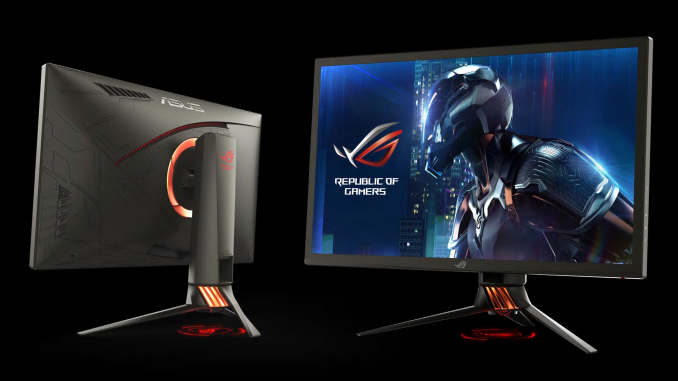

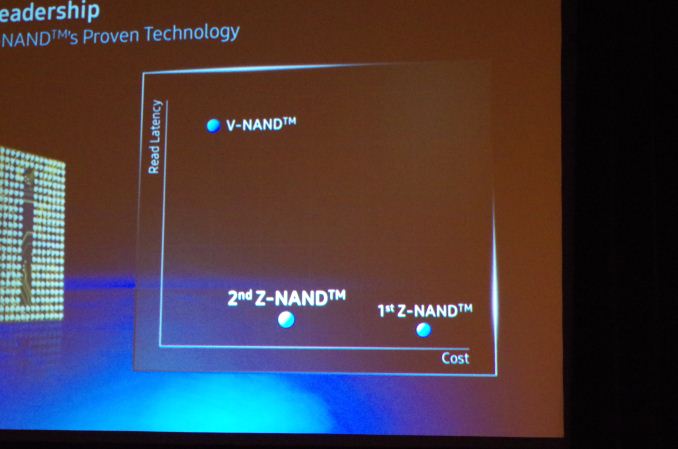
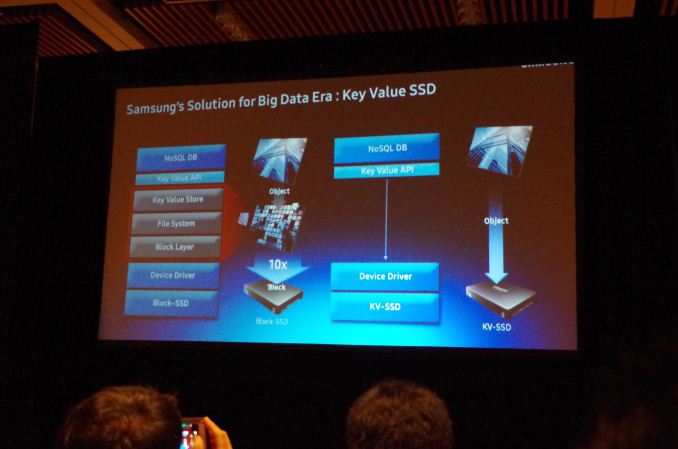
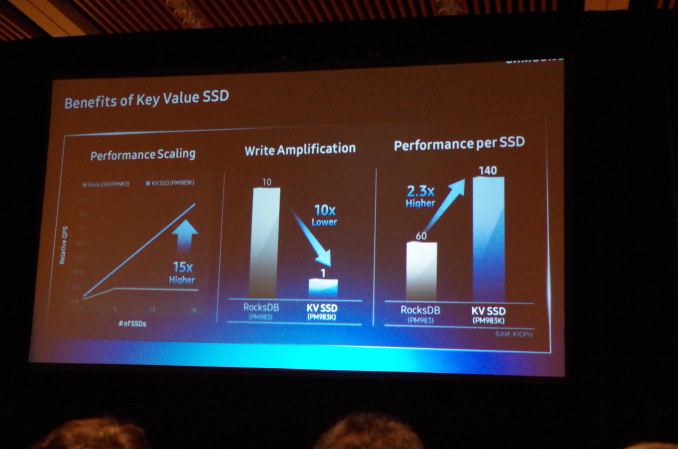

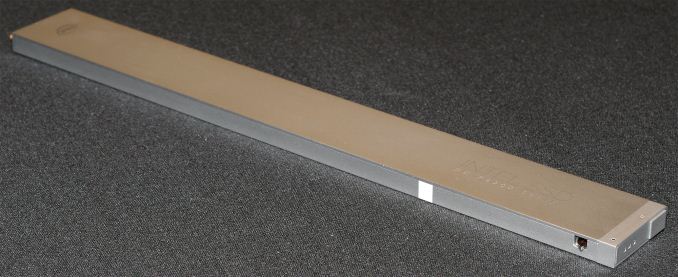
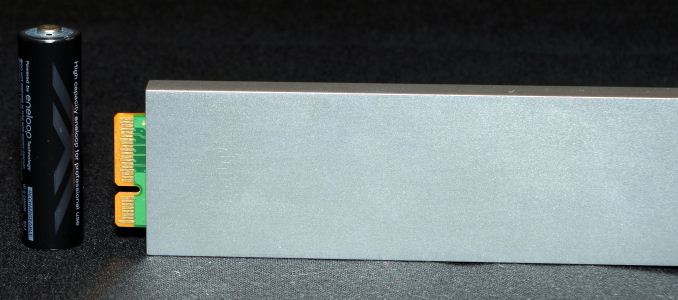
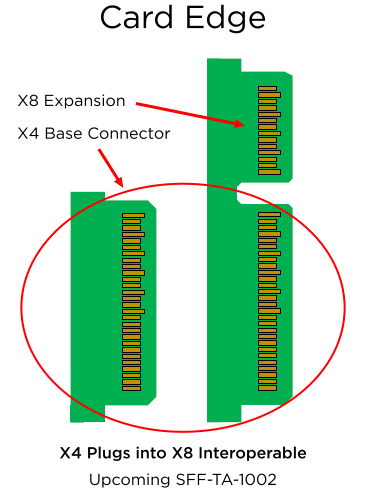
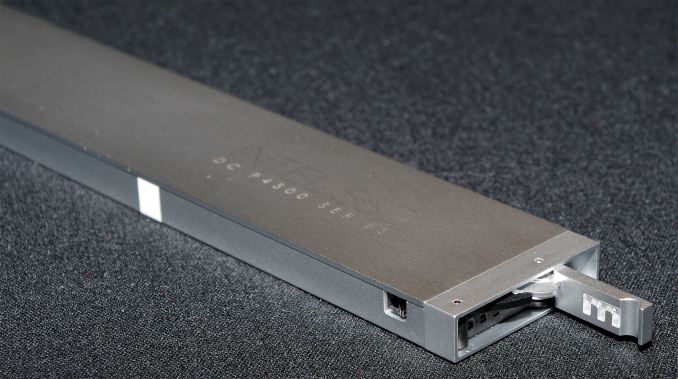
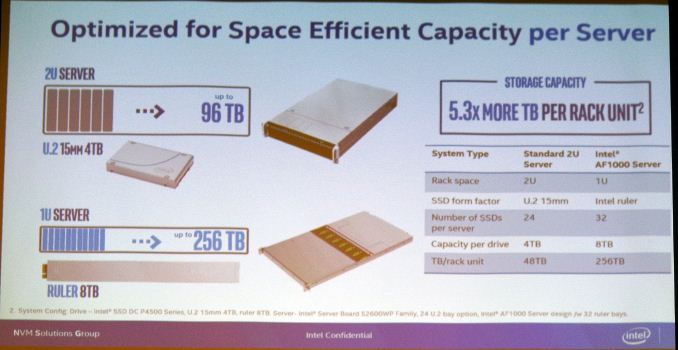
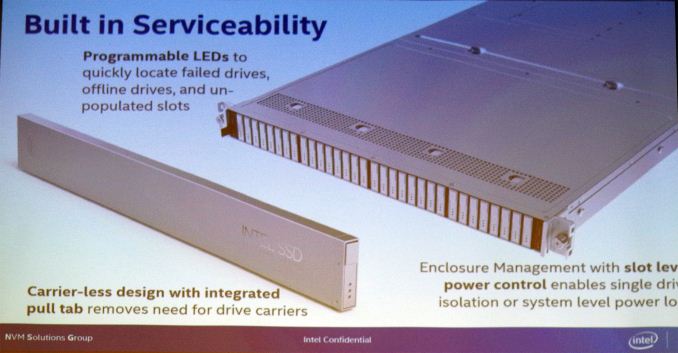
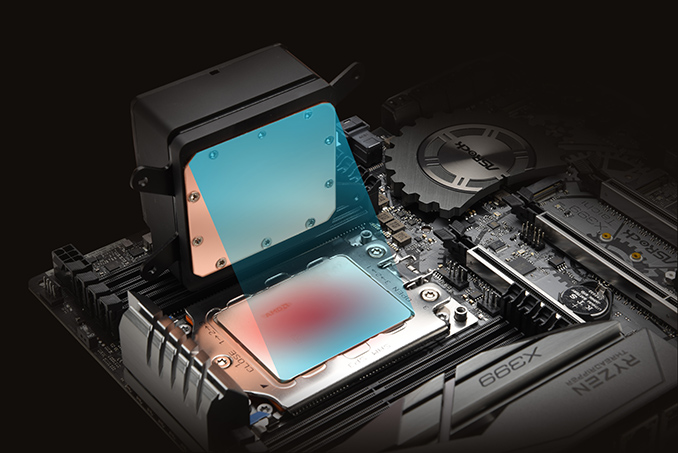

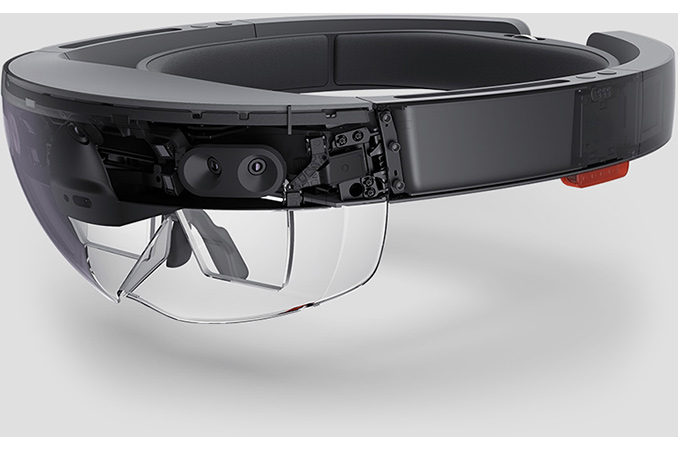
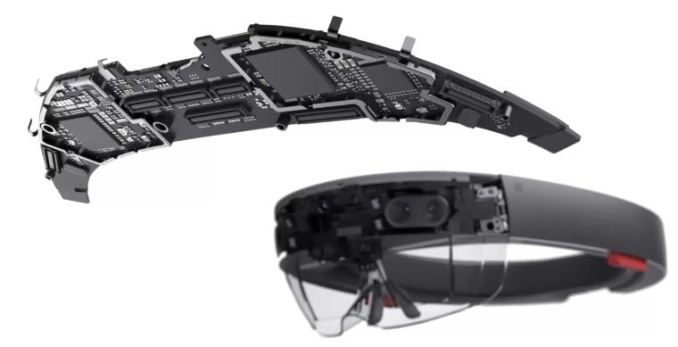
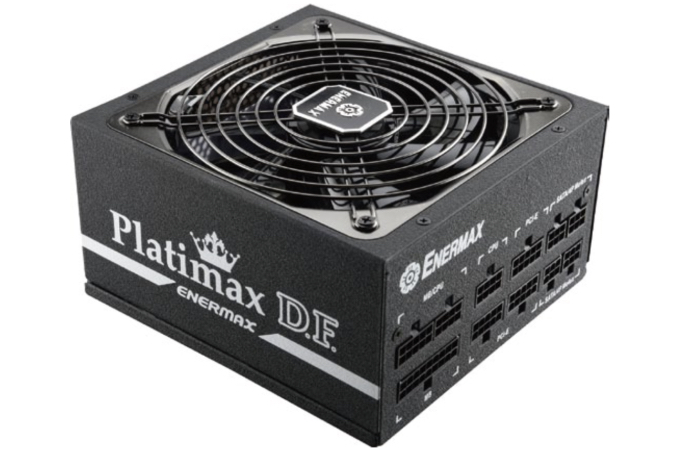


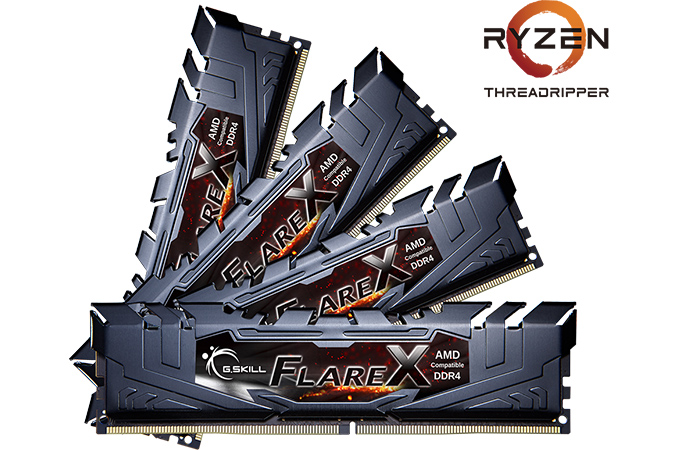
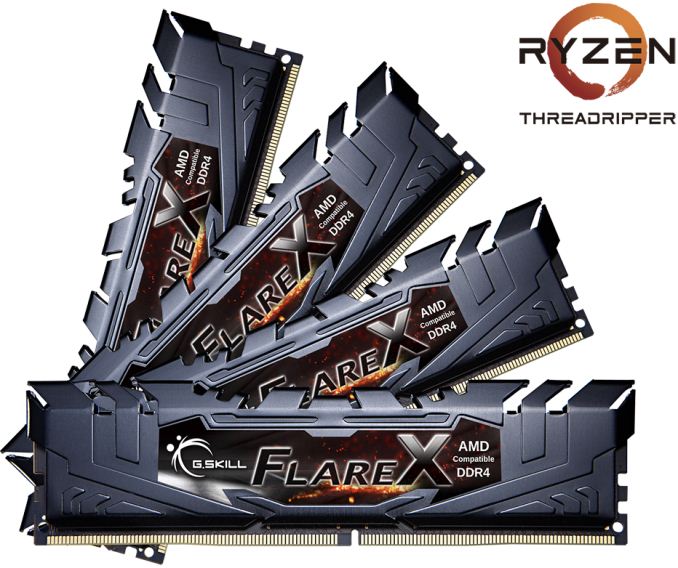
















Bookmarks